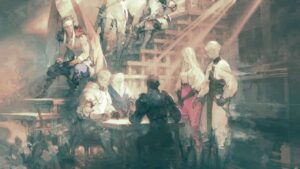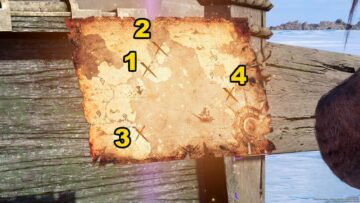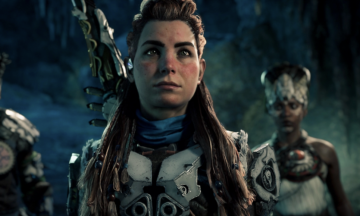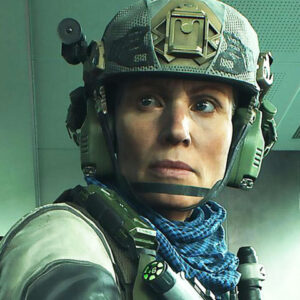The Good Life is exceptionally silly in all the right ways. It’s not just the absurd premise: Naomi Hayward is a young photojournalist from New York who has inexplicably run up a personal debt of £30,000,000 and is somehow trying to work it off by uncovering the secret of the sleepy English village of Rainy Woods, where the inhabitants transform into cats and dogs with the full moon.
Of course, that is part of it, but it’s also more that The Good Life–part life sim and part detective RPG–takes a gleefully frivolous approach to its every aspect. From the oddball delights of its cast of characters to the increasingly preposterous demands of its relentless fetch quests, there’s surprisingly little here that merits being taken seriously–even the central mystery. Naomi may constantly refer to Rainy Woods as a “goddamn hellhole,” but she’s quick to settle in and soon finds herself caught up in the nonsense, whether she’s smashing through barrels on a cross-country pig ride or helping the local butcher perfect his meat pie recipe. With the stakes pitched low, The Good Life carries itself with a breezy, knockabout charm befitting its title.
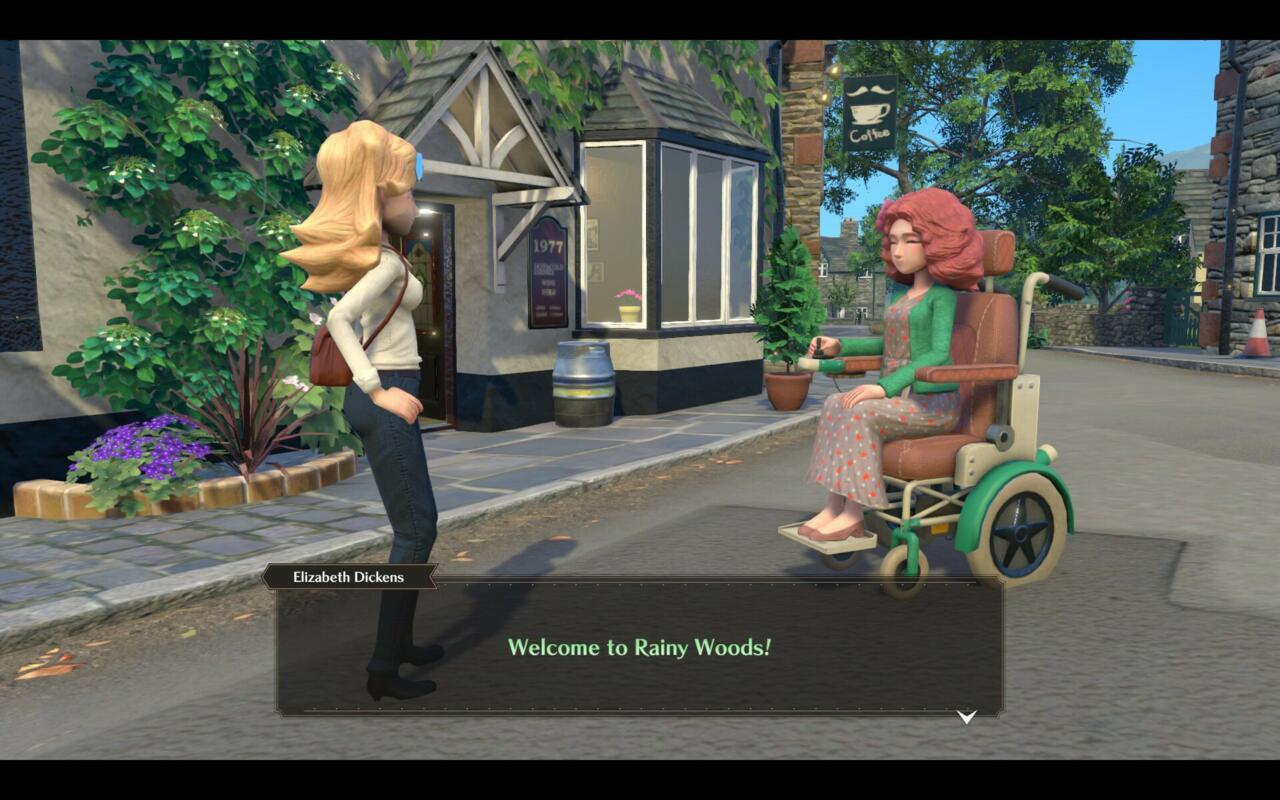
Gallery
Yet despite the abundance of infectious whimsy, there are significant caveats. The quaintly playful tone belies a quest structure that leans heavily into grind, as you scour the countryside for crafting materials and, at times, painfully rare drops. Unassuming tasks, like buying new shoes or making a salad, can require serious up-front investment. Fully exploring The Good Life’s myriad systems is a lot of work and the rewards for doing so aren’t always as satisfying as you might hope.
The Good Life’s development was helmed by creative director Hidetaka Suehiro, better known simply as SWERY. His games tend to be overflowing with bold, often startling creative choices, alongside a raft of more prosaic technical limitations and mechanical failings. When the former shines brighter, we get cherished cult favorites like Deadly Premonition or The Missing; when the latter’s shadow can’t be avoided, we end up with disappointments like Deadly Premonition 2.
In a sense, The Good Life is unusual for a SWERY game in that its marriage of genres is quite conservative. The quest structure adheres to the standard template of any open-world RPG of the last 15 years, while the life-sim maintenance is a familiar variety of farming, cooking, and crafting. Even Naomi’s ability to use her camera is handled in a relatively conventional fashion. As part of their questlines, characters will ask you to photograph a certain object or landmark, while Naomi can also earn money by uploading snaps to an Instagram-style social media platform.
Taking photographs could hardly be simpler: You point and shoot, and if the desired object is highlighted in the frame, it counts. A few different lenses provide options, but their use is never mandated. Unfortunately, there’s little incentive to spend time framing the perfect shot. No character is going to care that you captured that small church shrouded in the dying light of dusk. Equally, social media users will “emoke” (the game’s “like” equivalent) any old shot as long as it is tagged with that day’s popular hashtag.
The real interest in the photography aspect arrives on the occasions where you’re challenged to work out what you’re meant to be shooting. Sometimes it’s as simple as remembering where the village’s solitary post box is located. Other times the quest will helpfully mark where you need to go on the map. But on occasion, you’re given nothing but a cryptic clue to lead you to the whereabouts of the desired subject of the shot. These little puzzles are generally satisfying to solve and provide a much-needed, albeit still sadly too infrequent, break from the routine box-ticking of the remaining photography quests.
Aside from the photography, the other major area of novelty is that Naomi is quickly granted the ability to join the villagers in turning into an animal. Indeed, she’s able to transform into a cat or a dog whenever she likes, untethered from the phases of the moon. Both animals confer distinct abilities. In feline form, you can travel quicker, jump over higher obstacles, climb certain walls, and hunt small creatures like rabbits and mice. As a canine, you have more stamina, can fight larger creatures such as badgers, are able to track people by their scent, can dig up all sorts of buried items, and can even urinate to mark your territory.
The Good Life is unusual for a SWERY game in that its marriage of genres is quite conservative. The quest structure adheres to the standard template of any open-world RPG … while the life-sim maintenance is a familiar variety of farming, cooking, and crafting
For all the promise held by this transformation ability, in practice, it feels under-developed. There’s no opportunity to get creative. Most of its use is prescribed. For example, when a quest asks you to follow someone, you simply turn into a dog and sniff them out by scanning the “scent clouds” that will lead you to them. Too often you’re only in cat form because you need to jump over fences that Naomi is unable to hurdle or because you’ve got to kill a bunch of squirrels to gather crafting materials. (Don’t worry, the squirrel murder is over in a comical dust cloud flash.) It never feels truly transformative.
Even more underwhelming is how little is made of the fact that everyone else can also turn into a cat or a dog. Early on, it’s introduced as a Big Deal. As it should be! Then it’s just accepted and pretty much forgotten about. Wander down to the town square at night and you’ll see the furry villagers prancing around. You can pet them, or play with them if you’re similarly transformed, and watch a brief animation, but that’s about the extent of it. There may be more side quests I failed to discover, but I encountered only the one quest that required me to interact with a transformed villager. I expected considerably more.
The Good Life is also unusual for a SWERY game in that it displays a certain level of technical proficiency and–dare I say it–a degree of polish. Of course, it looks dated, but it isn’t downright ugly; some of the texture work is iffy and the sparse meadows surrounding Rainy Woods are regrettably bland, but most of your time is spent in and around the lovely little town square, and its cluttered shopfronts, pokey laneways, and lush hedgerows are always a delight to revisit.
Character controls and movement, distinctly awkward in other SWERY games, are no worse than competent here. Initial concerns about Naomi’s slow speed and short stamina meter compared to the size of the map are alleviated once you start unlocking fast travel sites, gain access to quicker modes of transportation, and begin crafting and purchasing clothes to enhance her abilities. Some of the animal abilities suffer from rudimentary animation, but never to the extent that it impedes what you’re trying to do. Even the performance is fine–at least on the PC and PS4 Pro versions I played–with no frame drops or alarming draw distance issues to speak of. It’s not saying a lot, but this may well be SWERY’s most polished game yet.
Yet in many ways, The Good Life is very much a SWERY joint. Although lacking the darkness of Deadly Premonition and The Missing, The Good Life revels in the same kind of collision between the everyday and uncanny. One moment, you’re tending to mundane tasks like making breakfast and having a shower, and the next moment, you’ve stepped through the looking glass and into some remnant of Arthurian legend. It is joyously, deliriously bonkers in a way that feels like SWERY is deliberately doubling down on the quirkiness for which he’s renowned.
The inhabitants of Rainy Woods are all depicted in what has become SWERY’s hallmark style. They each possess a couple of distinctive characteristics that are easily communicated through the lightest of touches, often little more than a signature animation or pose and a memorable catchphrase. None of the cast are granted the depth of Francis York Morgan from Deadly Premonition, but they’re uniformly charming and funny and utterly obsessed with food. Taken together, their accumulated personality brings the village to life and succeeds in transforming it into a place you care about.
The little details of daily life help here, too. Villagers tend to maintain routines, heading to their place of work during the day, then back home at night. Get up early enough and you’ll spot Bruno strolling into town to open his cafe. Wait until mid-morning and there’s Martha heading down to the lake to paint. It’s enjoyable to observe these comings and goings, not just because it’s tremendously satisfying when a later quest asks you to recall where Douglas is likely to be on a Sunday morning, but because you soon start to feel these lived-in grooves yourself. Naomi’s daily routines–showering and eating before leaving the house, checking the garden, taking the road down to the village, popping into the pub or the cafe, chatting with everyone–ground her in this world and help forge your connection with Rainy Woods.
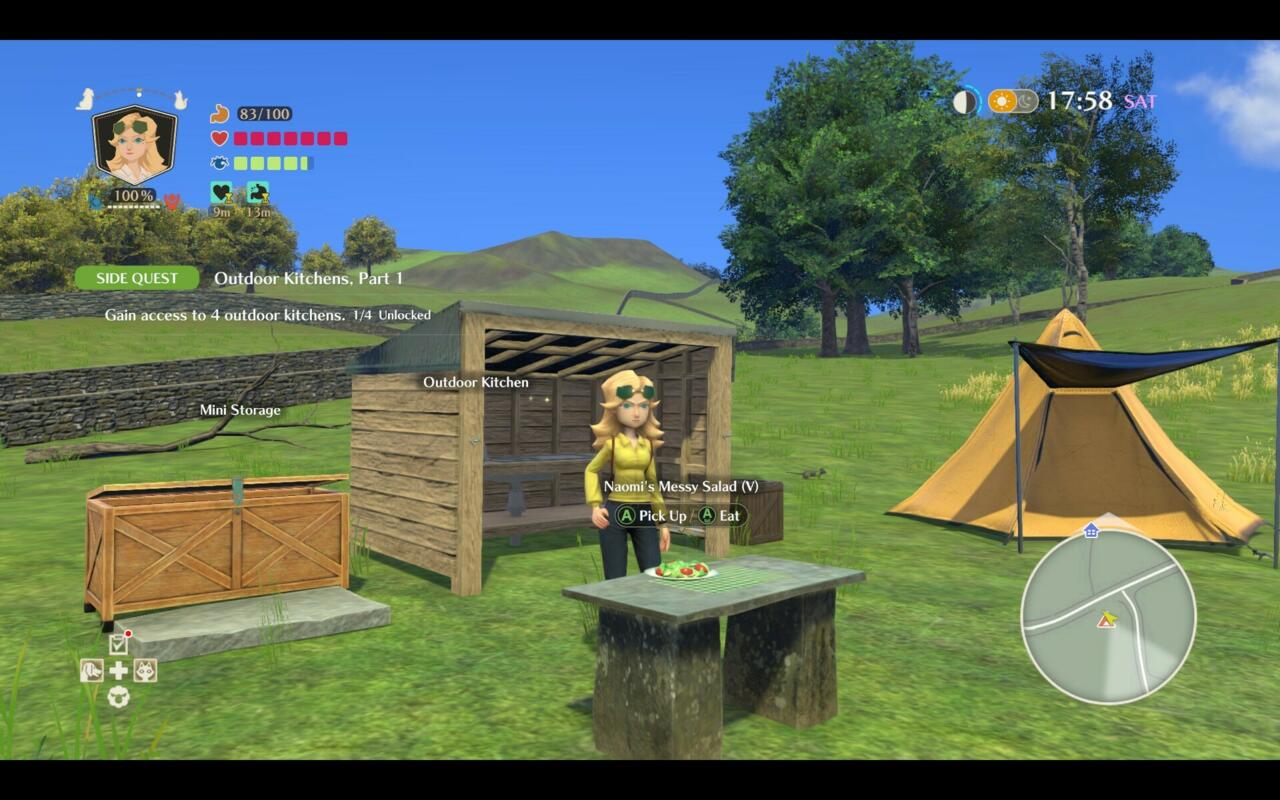
Gallery
Where that connection breaks is when the routine becomes too grindy. Much of the crafting and upgrades available are only earned through some extremely tedious resource collection, whether that’s running around the woods picking herbs and fungus, heading to the caves and quarries with your pickaxe, hunting animals, or digging up holes. You end up having to collect a lot of different crafting materials, many of which only have a small–sometimes incredibly tiny–chance of dropping. It quickly becomes boring to spend days on end repeating the same farming run while you pray the RNG swings in your favour. It’s true, you can purchase some of these materials, but you’ll need money to do that, and earning money is another kind of grind, really. At times, Naomi and other characters crack a joke about how tedious this all is, or ask why anyone would actually want to do this. And, I’ve gotta say, it’s hard to laugh at the “joke” when you’re the one stuck living it.
The Good Life is a curious and uneven experience. As a sort of hybrid RPG meets life-sim, it’s certainly competent, despite the grind it demands. Surprisingly, the novel premise takes a back seat for the most part, but it’s never anything less than adorably easy-going, carried along by a carefree attitude and endless charm.





